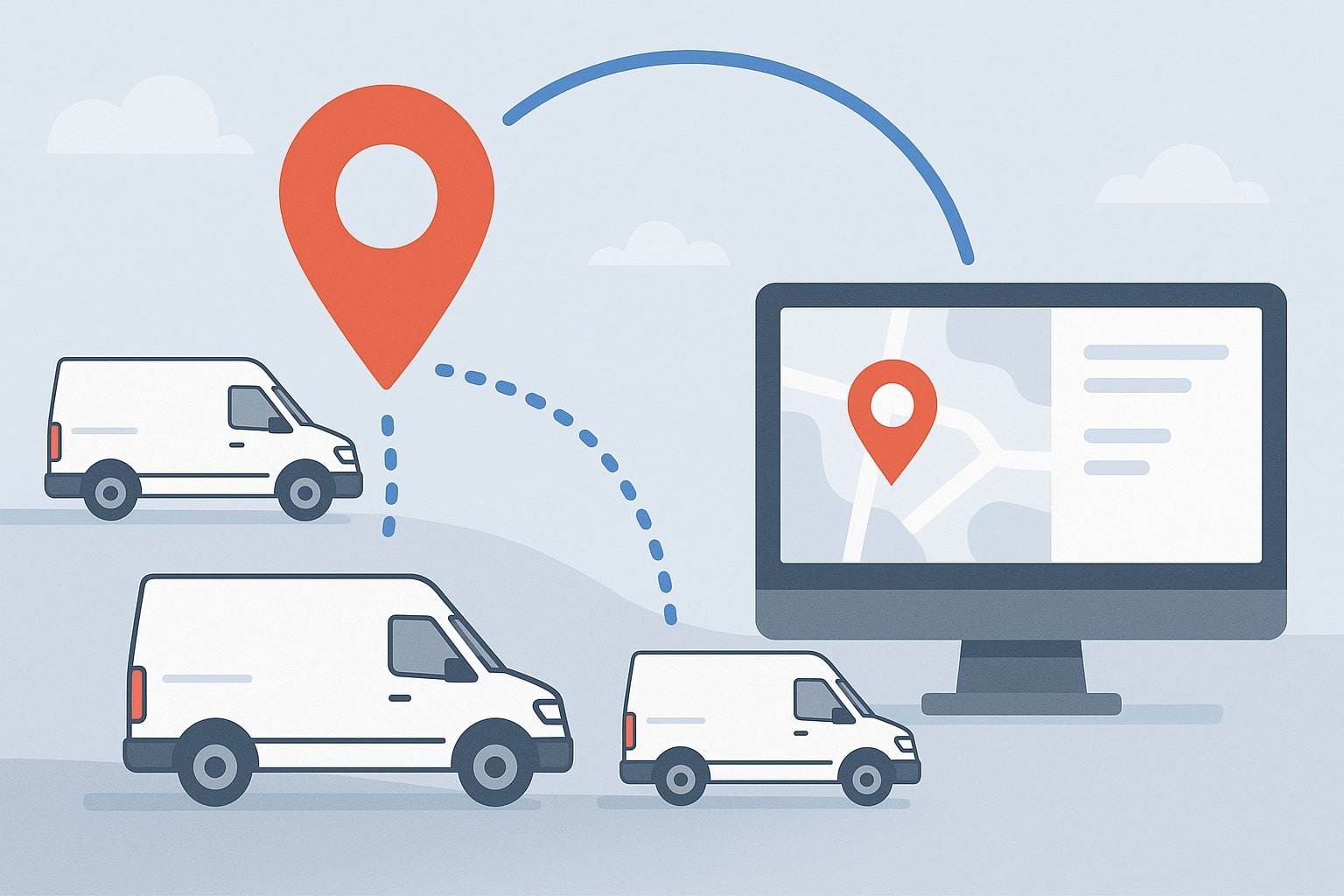 Miya Bholat
Miya Bholat
Jun 05, 2025
Leveraging GPS Tracking and Telematics for Better Fleet Operations

The Evolution of Fleet Management and GPS Tracking
Remember the days of paper logbooks, manual vehicle inspections, and calling drivers to figure out where they were? If you've been in fleet management for a while, you probably have war stories about tracking down vehicles or dealing with surprise maintenance issues that could have been prevented.
Today's fleet operations have evolved dramatically—and for good reason. With fuel costs constantly fluctuating, increasing regulatory requirements, and tighter margins, running an efficient fleet requires more than just good drivers and basic maintenance schedules.
Modern fleet management software that integrates GPS tracking and telematics devices isn't just a fancy tech upgrade—it's becoming essential for competitive operations. Let's break down the benefits to your daily fleet operations:
Real-Time Visibility: Beyond Just Dots on a Map
GPS tracking has come a long way from simply showing vehicle locations. Today's integrated systems provide several unique benefits for fleets like:
- Live vehicle status updates showing not just location but idle time, speed, and even engine diagnostics
- 24/7 location awareness of all vehicles and equipment to maximize customer service uptime
- Geofencing capabilities that alert you when vehicles enter or leave designated areas
- Historical playback allowing you to review routes and driver behavior
- Complete visibility into mobile assets whether they're vehicles, trailers, or specialized equipment
With AUTOsist, fleet managers can monitor exactly what is happening across their entire fleet in one dashboard. It's like having extra eyes on every vehicle, and we can immediately dispatch the closest technician to urgent service calls, cutting our response time by nearly half.
Fleet Maintenance That Predicts Instead of Reacts
For maintenance teams, integrated telematics data is a game-changer. Fleet and maintenance supervisors using telematics devices receive real-time engine diagnostic codes that alert you to issues before they cause breakdowns.
They also gain driver behavior insights like speeding, harsh breaking and seatbelt usage that reveal patterns that might be causing excessive wear and tear.
Driver scores, which are on a 1-100 scale, are then ranked on a leaderboard to incentivize drivers to operate vehicles safely to achieve the best possible score. To limit potentially dangerous driving habits, drivers receive instant in-cab alerts when the vehicle violates the threshold for things like acceleration and braking. This has been extremely helpful to pinpoint areas of improvement and guarantee the safety of all parties.
“Fleet telematics and driver scoring is great for us to help coach our drivers and also aids in the risk and insurance aspects of the business.”
— Matt Rozeboom - General Manager of Dealer Services, Signal Security
Research from the National Highway Traffic Safety Administration (NHTSA) indicates that risky driving behaviors contribute to approximately 94% of crashes. This data helps you identify which drivers might need additional coaching, recognize your safest drivers, and potentially lower insurance premiums by demonstrating your commitment to safety.
The ROI of Integrated Fleet Management System With GPS Tracking and Telematics Devices
Let's talk about the bottom line—what kind of returns can you expect? First off, you can save on fuel costs as reduced idling and improved driver habits consume less fuel. Second, maintenance costs are lessened by the early issue detection and safer driving extending the lifespan of parts like tires and brakes. Finally, fleet insurance premiums are less for fleets that demonstrate safe driving behavior and telematics data.
You can also gain operational efficiencies from GPS and telematics devices through:
- Increased vehicle utilization by identifying underused assets
- Extended vehicle lifespan through better maintenance and driving habits
- Reduced paperwork and administrative time with automated reporting
- Improved customer service with accurate ETAs and delivery confirmations
- Maximize uptime and service availability by always knowing asset locations and status
- Faster response times through real-time visibility into the nearest available vehicles
The key to gain adoption amongst your drivers is transparency—explain how the system benefits them too:
- Reduced paperwork
- Faster response if they need assistance
- Recognition for good driving habits
- Proof that they're following protocols when questions arise
- Gamify and reward those who rank as the safest drivers
These are just a few of the ways you can motivate your drivers to participate and improve their driving habits for the greater safety and performance of the business.
Taking the Next Step
The fleet management landscape continues to evolve, with new technologies emerging regularly. Whether you're managing a small fleet of five vehicles or responsible for hundreds, the right integrated GPS tracking and telematics solution can transform your operations.
The question isn't whether you can afford to implement these technologies, it's whether you can afford not to while your competitors gain these advantages.
Ready to explore how integrated fleet management software could benefit your operation? The first step is assessing your current pain points and identifying which metrics matter most to your bottom line.
Remember, the best system is one that addresses your specific challenges while being simple enough that your entire team will use it.